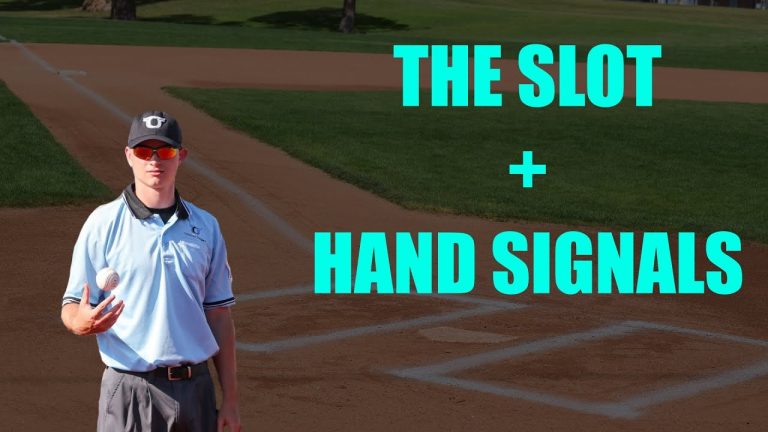
In the world of baseball, the role of umpires is crucial in maintaining fairness and ensuring the integrity of the game. One key aspect of their job is positioning, as umpires strategically place themselves on the field to make accurate calls. From behind home plate to the bases, their positioning allows them to have the best view of the action, making split-second decisions with confidence. In this article, we delve into the art of umpire positioning, exploring the strategies and techniques that make these officials an indispensable part of America’s favorite pastime.
Where are the positions of the umpires in baseball?
In a game of baseball, the positioning of the umpires is crucial for maintaining fairness and accuracy. The 1st Base Umpire takes up a strategic position between 1st and 2nd base, allowing them to closely observe the pitch as it reaches the batter and simultaneously keep a watchful eye on the runner occupying 2nd base. Similarly, the 3rd Base Umpire strategically positions themselves in foul territory behind 3rd base, ensuring a clear view of the pitch as it approaches the batter and attentively monitoring the actions of the runner stationed on 3rd base. By strategically stationing themselves in these positions, the umpires are able to make informed and decisive calls, contributing to the smooth flow and integrity of the game.
What stance should an umpire adopt?
When it comes to the proper umpire stance, it is crucial for the home plate umpire to position themselves correctly in the catcher’s box. By lowering their torso, they ensure that their chin is slightly above the crown of the catcher’s helmet. This strategic adjustment not only establishes a clear line of sight to all parts of the strike zone, but also allows them to see the outside corner of the plate without having to turn their head. This meticulous attention to positioning ensures that the umpire can effectively make accurate calls and maintain control of the game.
Why do baseball umpires direct their finger towards the right?
Baseball umpires point to the right to signal that the ball is back in play. By pointing towards either the pitcher or the plate, the umpire uses their right hand to make this crucial call. This action serves as a clear indication for all involved parties, including the pitcher, catcher, defense, and offense, allowing them to react promptly and resume the game with precision.
The umpire’s right-handed pointing gesture, accompanied by the announcement of “Play!”, plays a vital role in maintaining the flow of the game. This simple action ensures that everyone on the field is aware of the ball’s status, preventing any confusion or delays. By using their right hand, umpires establish a standardized signal that is universally understood, promoting efficient communication and coordination among all players.
The umpire’s right-hand point not only signifies the ball’s return to play but also acts as a unifying signal for the entire baseball community. This consistent gesture, repeated countless times throughout games at all levels, serves as a visual reminder of the sport’s traditions and rules. It symbolizes the umpire’s authority and their role as the ultimate arbiter of the game, creating a sense of unity and respect among players, coaches, and fans alike.
Precision on the Field: Mastering Umpire Placement for Pinpoint Accuracy
Precision on the Field: Mastering Umpire Placement for Pinpoint Accuracy
In the world of sports, where every millisecond and inch can make or break a game, umpire placement is the unsung hero of precision. Like a conductor orchestrating a symphony, the strategic positioning of umpires ensures that every call is made with pinpoint accuracy. From the baseball diamond to the soccer pitch, umpires must navigate the field with a keen eye and quick reflexes, ready to make split-second judgments that can determine the outcome of a match. With unwavering focus and meticulous attention to detail, these masters of placement bring order and fairness to the chaos of competition, ensuring that the game is played with integrity and precision.
Unleashing the Power of Strategic Positioning: Elevating Umpire Precision in Baseball
In the fast-paced world of baseball, strategic positioning plays a crucial role in ensuring umpire precision. By strategically placing umpires in the most advantageous positions on the field, the accuracy of their calls can be greatly enhanced. This not only improves the overall fairness of the game but also elevates the level of trust and confidence that players, coaches, and spectators have in the umpires. With a clear understanding of the game’s dynamics and a keen eye for detail, umpires can unleash the power of strategic positioning, creating a seamless and efficient experience for all involved.
In the fast-paced and ever-evolving game of baseball, umpire positioning plays a crucial role in ensuring fair and accurate decision-making. By strategically placing themselves in the right spots on the field, umpires can obtain the best possible vantage point to make accurate calls. From behind home plate to the outfield, their positioning allows them to closely monitor plays, assess pitches, and ultimately uphold the integrity of the game. With their careful positioning, umpires contribute to the seamless flow of the game, instilling confidence in players and spectators alike.
